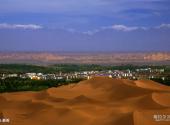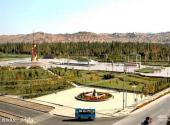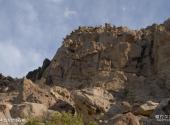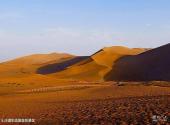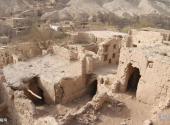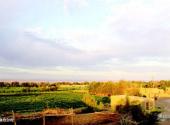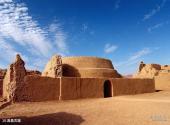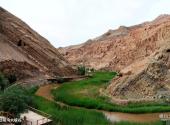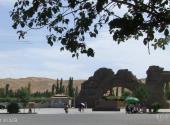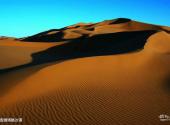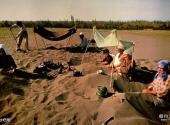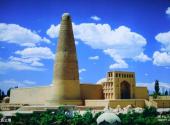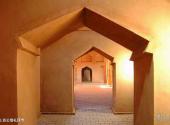
Scenic spot introduction:
Turpan, Xinjiang, covers an area of 15,738 square kilometers. It has been known as the "Hometown of Grapes" since ancient times. It was once an important town on the ancient Silk Road and is famous for its unique environment, numerous historical sites, and rich products. Various high-quality grapes grown in Grape Valley are famous both at home and abroad. There are 24 ethnic groups living here, including Uyghur, Han, Hui, Kazakh, and Russian, among which Uyghurs account for 71% of the total population. Turpan is also the hottest place in China. The daily average temperature exceeds 35 degrees Celsius for more than 100 days. The extreme maximum temperature once reached 49.6 degrees Celsius (July 13, 1975). The surface temperature was once measured at 83.3 degrees Celsius. It is called China's " "Extremely hot", so it is called "Fire Continent". Strong winds often blow in the basin, with the maximum wind force reaching level 12 or above, so it is also known as the "wind bank". Although Turpan is extremely hot and rainless, Huozhou's unique underground water conservancy project, the Kaner Well, guides groundwater to the surface and irrigates hundreds of thousands of acres of fertile farmland in the basin, turning the desert into an oasis. The unique geographical location makes Turpan rich in underground water reserves, so the fruits are plentiful, including grapes, watermelons and other fruits. Due to the dry climate and little rain, the sugar content in the fruits is very high. Many people travel to Turpan just for the local good. Eat fruit to go. Turpan's tourism industry thrives on grapes. The local government has specially built a grape street with many grape corridors for tourists to visit and pick grapes.Attractions distribution:
Turpan is a beautiful pearl on the ancient Silk Road. It is located at the southern foot of Bogda Mountain in the eastern Tianshan Mountains and in the center of the Turpan Basin. The urban area is 184 kilometers away from Urumqi. The city is about 262 kilometers long from north to south, narrow and irregular from east to west, and about 90 kilometers at its widest point. Turpan has beautiful scenery. On the outskirts of the city, there are beautiful landscapes and monuments such as the Flame Mountain, Thousand Buddha Cave, Sugong Pagoda, Grape Valley, Jiaohe Ancient City, Karez, and Astana Tombs. There are museums in the city, which have the best preserved collections in Xinjiang. Complete monitor lizard fossil. There is also Gaochang Park, a water park and folk resort under construction, which can be described as an ancient folk city.Scenic spot features:
Photography, mountain climbing, historical and cultural tourism, religious tourism, folk customs tourism, ancient cities, ethnic minority villages, ancient tombs, temples, mountains, rivers, canyons, lakes, desertsBest time to visit:
From August to November, the climate is pleasant.
Shopping recommendations:
Specialty products: grapes, cantaloupe, tapestries, Yingjisha knives, Paraz, flower hats.
Food: Palmudin, mussels, pilaf, roasted lamb, roasted whole lamb, hand-caught lamb.
Scenic spot location:
China>Xinjiang Uygur Autonomous Region>Turpan City>Gaochang District
How to get there:
Airplane: Take a flight to Turpan Jiaohe Airport, which is about 10 kilometers northwest of Turpan city.
Train: All trains of Lanzhou-Xinjiang Line and Nanjiang Line stop at Turpan Station. It takes about 2 and a half hours to travel from Urumqi to Turpan by train.
By road: Take the shuttle bus bound for Turpan from Urumqi Nanjiao Passenger Station.
Scenic area map:
Click to expand the scenic area map
Turpan ticket price:
Flaming Mountain: 40 yuan; Grape Valley: 60 yuan;
Jiaohe Ancient City: 40 yuan; Karez: 40 yuan;
Sugong Pagoda: 40 yuan; Desert Botanical Garden: 30 yuan;
Su Gong Pagoda Temple: 25 yuan;
Scenic area opening hours:
Flame Mountain: 10:00-19:00
Grape Valley: Open all day
Jiaohe Ancient City: 9:00-18:00
Karez: 8:00- 17:00
Sugong Pagoda: Peak season (April 21-October 20) 8:00-21:00
Low season (October 21-April 20) 10 :00-18:30
Gaochang Ancient City: 8:00-21:00

